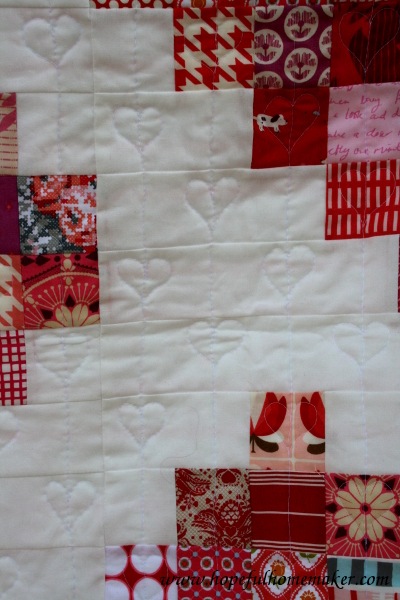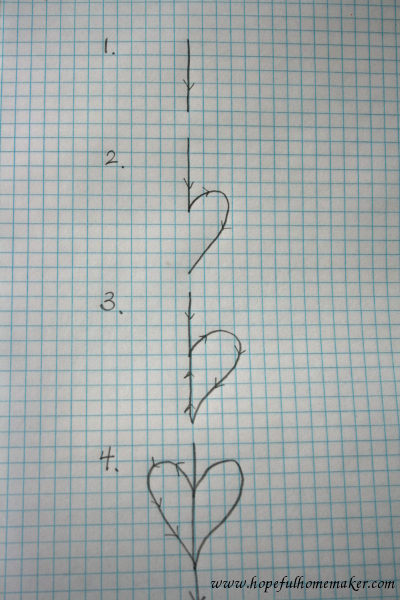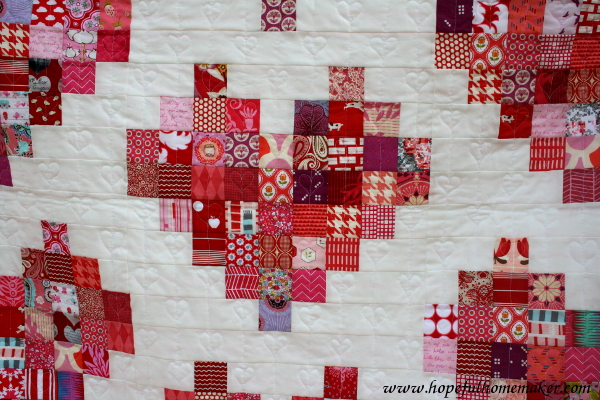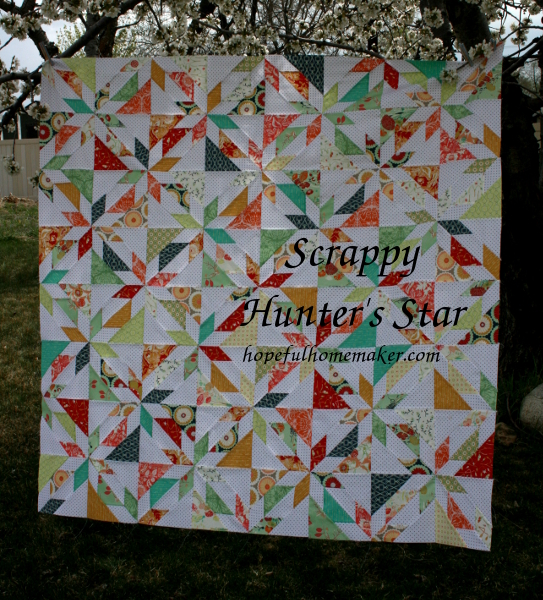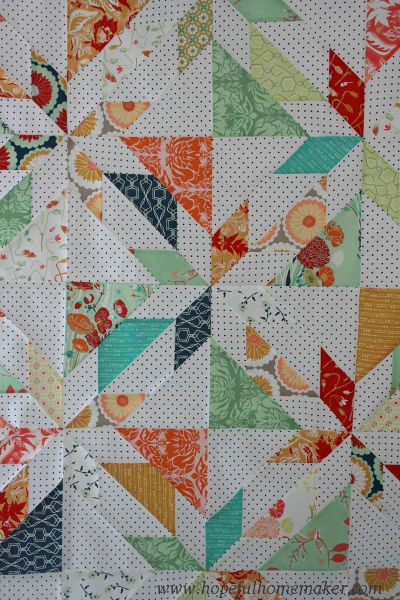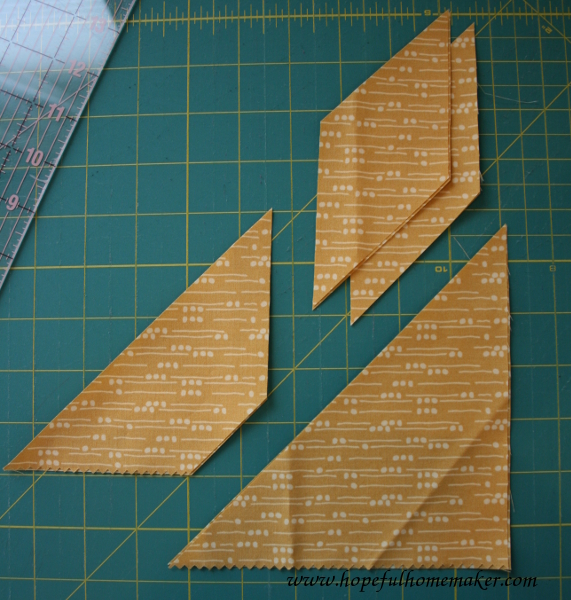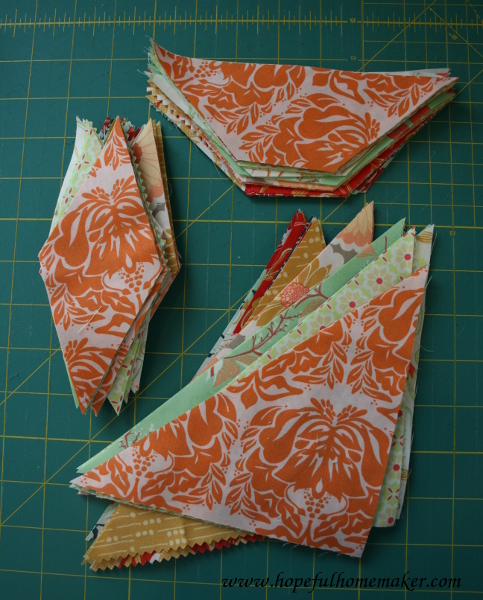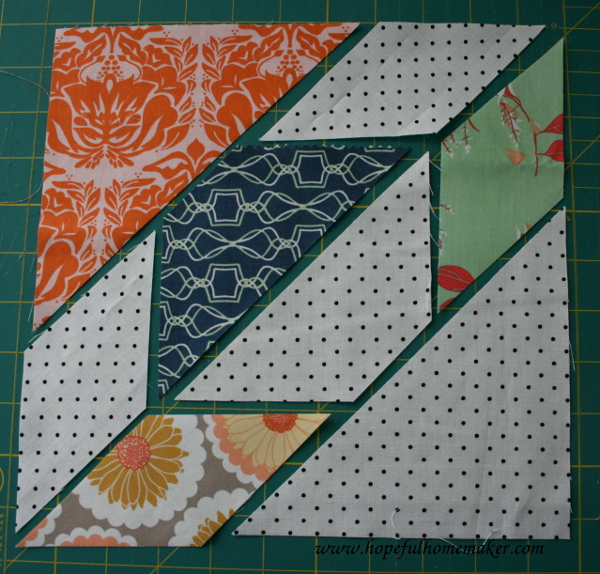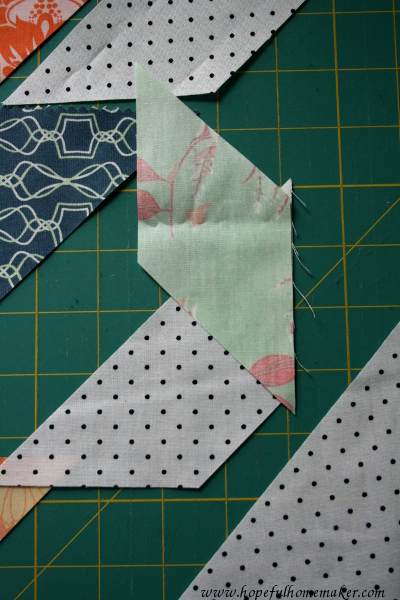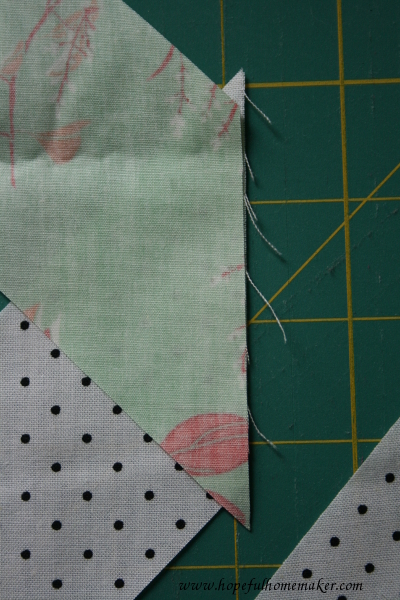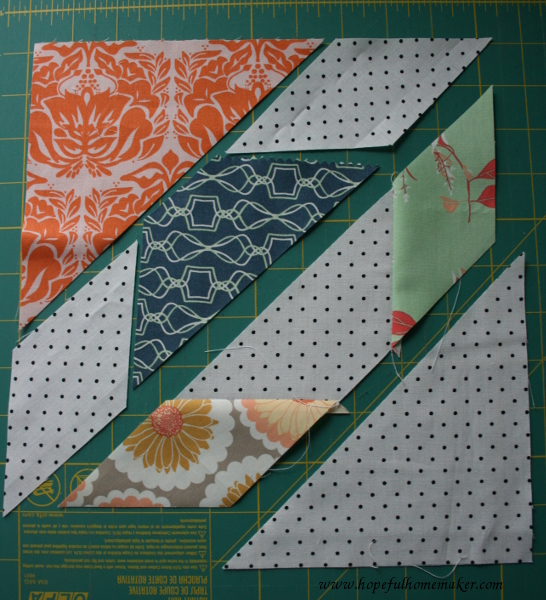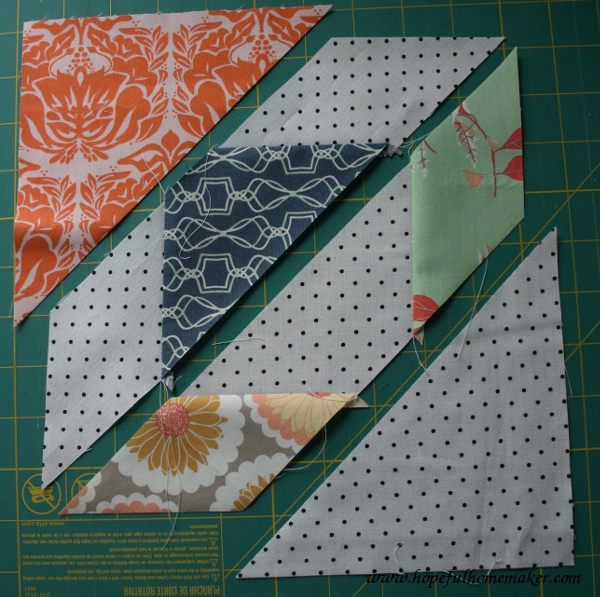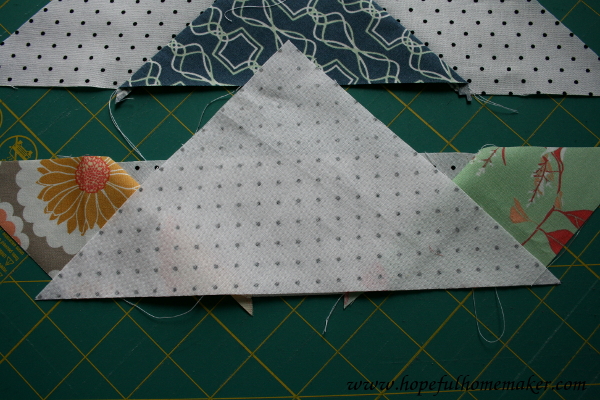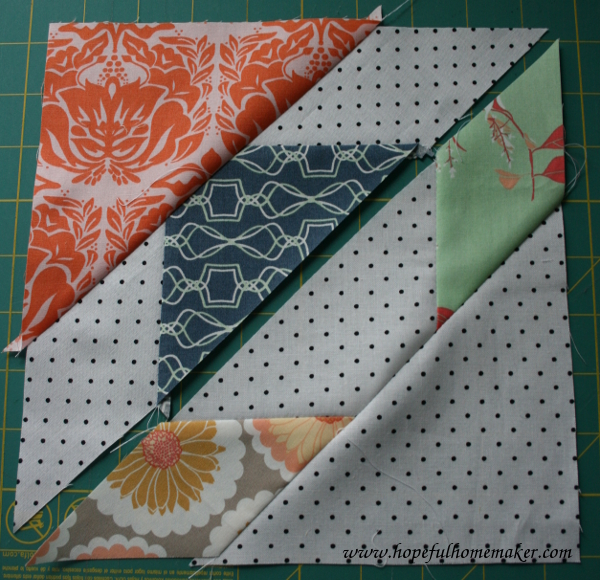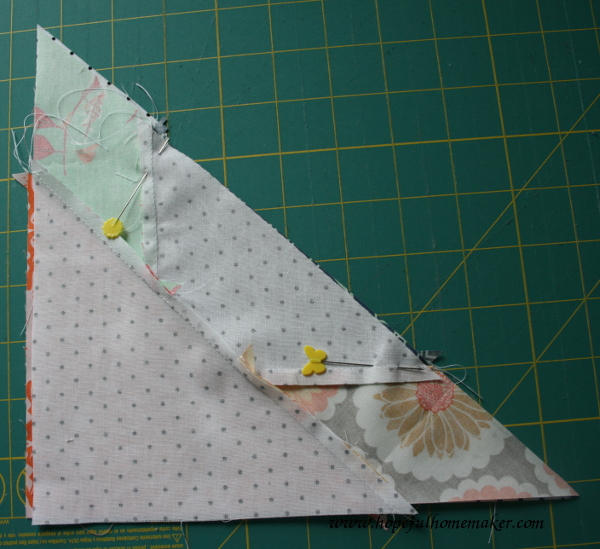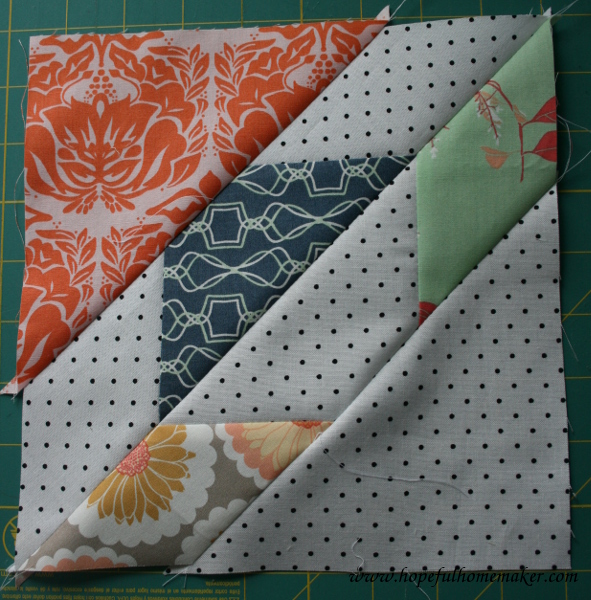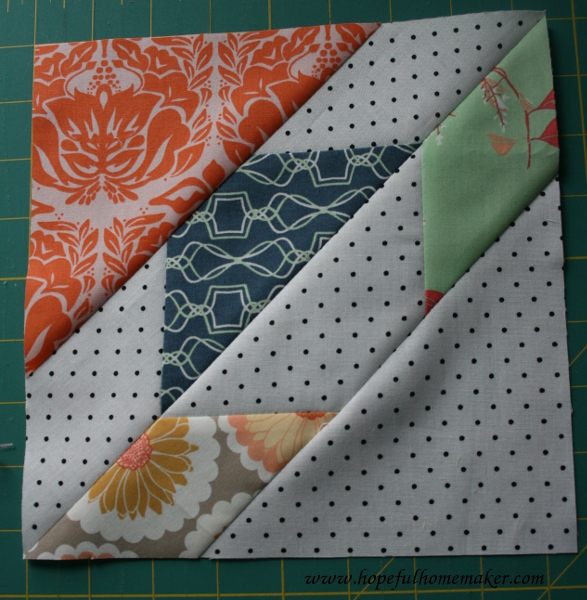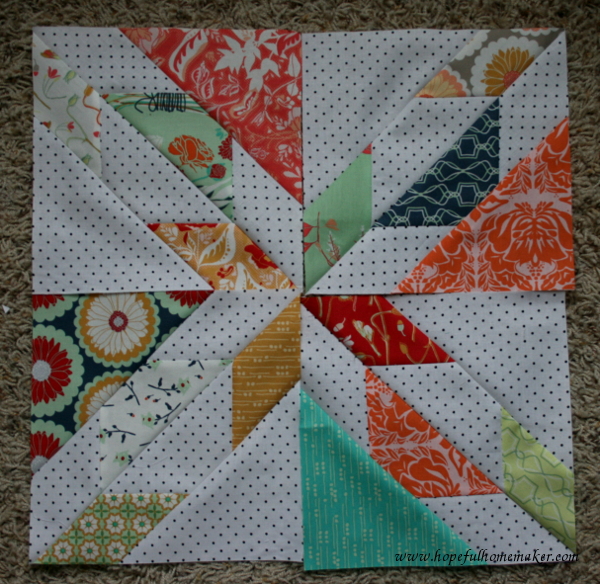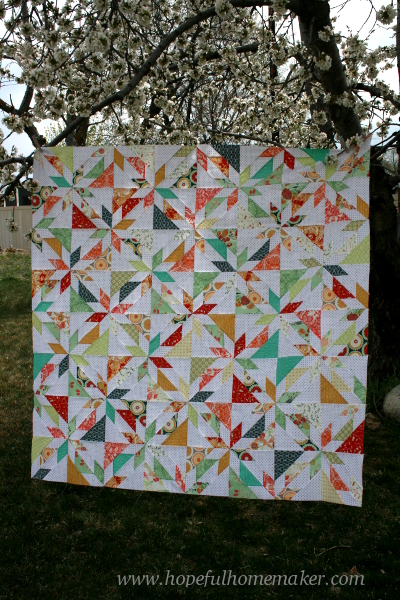Tone It Down Quilt

My Tone it Down quilt blocks have become finished quilt #3 for the year and given how busy life has been, it seems amazing that I’ve finished anything at all.

I love this quilt for several reasons. First, it has pieces of so many fabrics in it. I love the scrappy look it has, and having so many little bits I love in one quilt makes me smile. There’s also a distant memory that kept coming to mind as I worked on it. Many years ago my mom’s sister made her a quilt and I remember looking at it in awe. The pieces were so small and I remember wondering if there would ever be a time in my life when I would be capable of making something so complex. Twenty (or more?) years later I look at all the little pieces of this quilt and think “maybe I’m a real quilter, after all.”
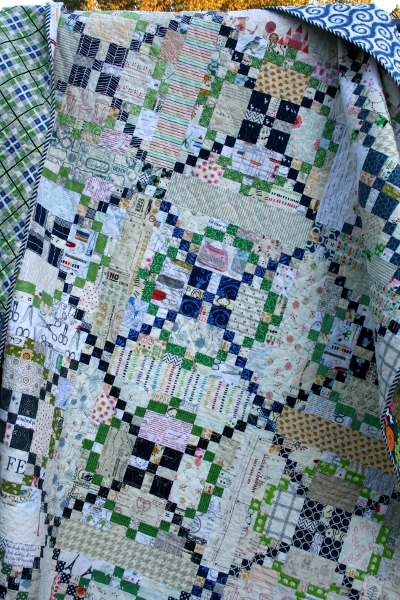
The navy and green together remind me of an outfit my mom bought me in high school. I was running for class president and we found the perfect thing for me to wear when I gave my speech. I’ve always loved navy and green together but when I see this combination the first thing that comes to mind are those clothes. I’m so glad navy is back in style. I never stopped liking it.
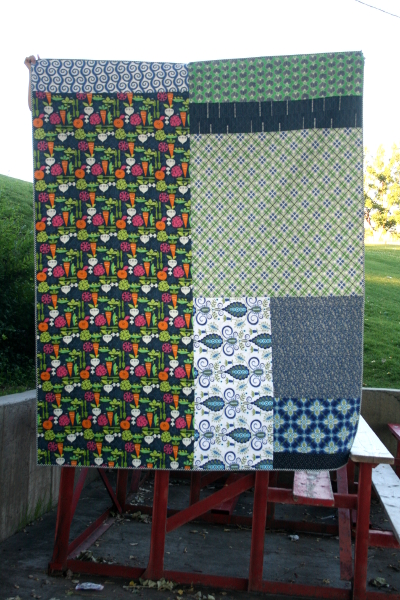
The backing was pieced in an attempt to “use it up” without worry of running out (something I’ve always struggled with). The Pillow & Maxfield prints were a gift from my sister, the veggies print by Maude Asbury reminds me of Broadbent’s quilt shop where the Utah County Modern Quilt Group meets. There’s a piece in there that I’ve had for at least 15 years because I loved it and couldn’t even explain why. I have very little of Denyse Schmidt’s Katie Jump Rope but used it anyway.
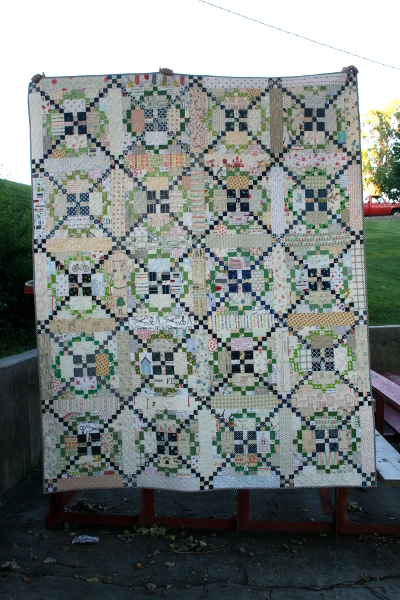
There is a funny story about one of the blocks in this quilt. When I was half done I suddenly felt that I couldn’t bear to make another block. I wanted to do something else, but this project had taken over my space and I’d committed myself to finish it. I started working faster, trying to crank them out, but 97 pieces only go so fast, even when you’re chain piecing. If you look carefully at the top right corner of the quilt, you’ll see in there a bright aqua fabric that’s not very “low volume.” That was the block on the sewing table when my desire completely fled, so I fussy cut a little “keep calm and sew on” piece to swap into the block in place of what I had planned. It would be the reminder block – the one that would make me smile when I remembered how badly I wanted to put it away. In fact, when I had the quilt top finished the first thing my children wanted to do was find that square.
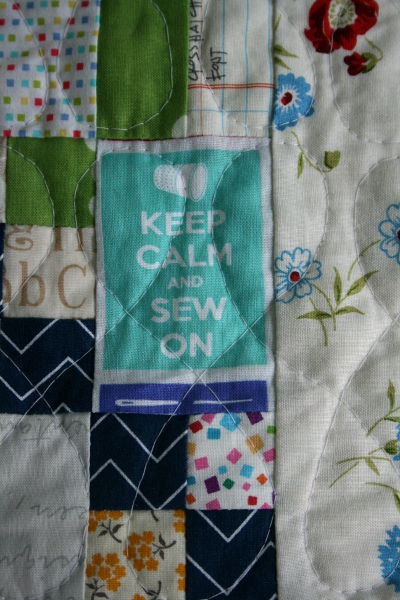
What really makes me laugh about that block is the fact that on the top row of the block, the green pieces are upside down! In my lack of enthusiasm I completely failed to notice that I pieced it incorrectly. In fact, I didn’t notice it until the quilt was bound and finished and one day I looked at it and it was the ONLY thing I saw. I guess that’s what happens when you look at something too much. So there’s an imperfect block in there that will stay as it is, and the whole thing just makes me laugh. I guess a mistake like that is a great way to make sure your quilt is one of a kind!
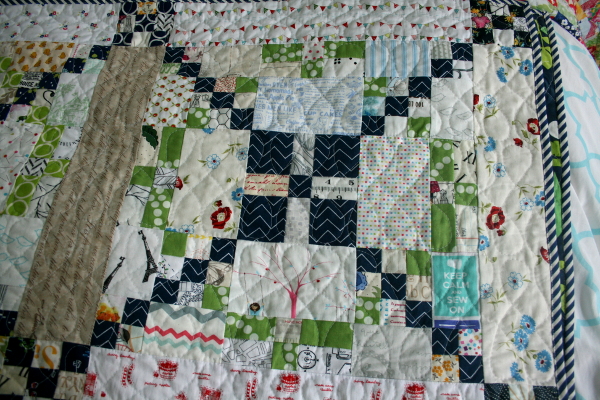
Every time I piece a quilt top I think to myself “I’ve got to have this one professionally quilted” because I love it so much. And then I finish it and hang it in the closet and get back to work around the house. I look at my children, how quickly we get holes in shoes, how much they eat, how much their activities cost, and remember that we’re in our most expensive years – and will yet be in this stage for a while. So I go back to the quilt, baste it and take a deep breath, and do my best. My quilting leaves much to be desired, but I’m trying and I’m slowly improving. On this quilt I tried the loopy pattern that Denyse Schmidt made so popular with the release of her most recent book, Modern Quilts, Traditional Inspiration . (A paragraph in that book provided me with a life lesson, shared here .)
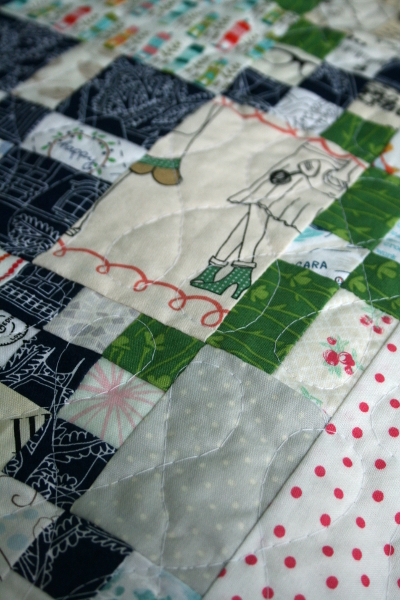
The rows vary in height (I did that on purpose) and it’s full of mistakes but I suppose that means it has even more of me in it. For the binding I hunted down the diagonal navy stripe from Bonnie & Camille’s April Showers collection and it was the perfect thing.
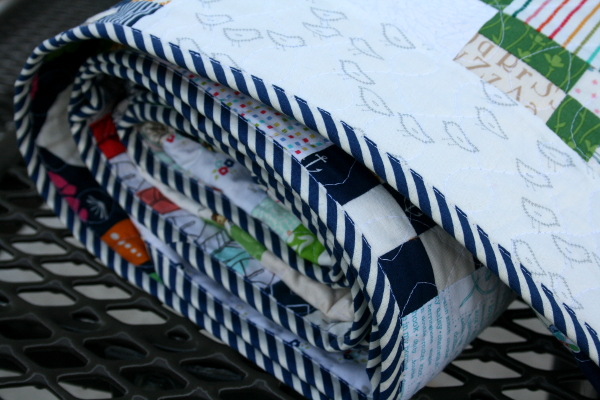
A finished quilt is better than a perfect quilt, and this beauty will always be a reminder to me of where I am right now – my skills, my tastes, the craziness of life, my sudden desire to quit, the popularity of low volume fabrics (a trend I’ve totally fallen for) and even a reminder of other quilters, well-known or not, whose work influence me at this point. The evening walk we took as a family to take these photos and the afternoon my kids spent crawling all over it playing “I spy” are memories already wrapped up in it, too.
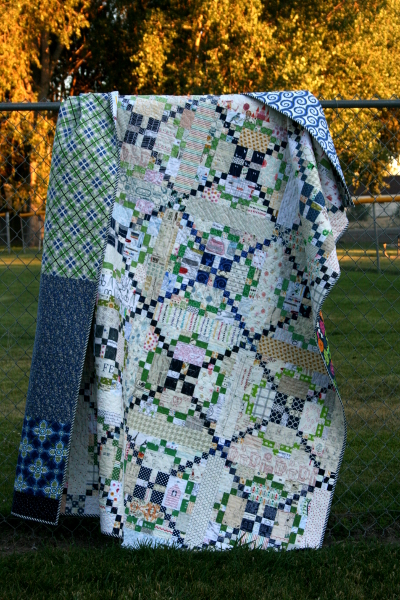
Thanks so much for visiting! For more information on the source of this pattern see this post .
Jennifer

